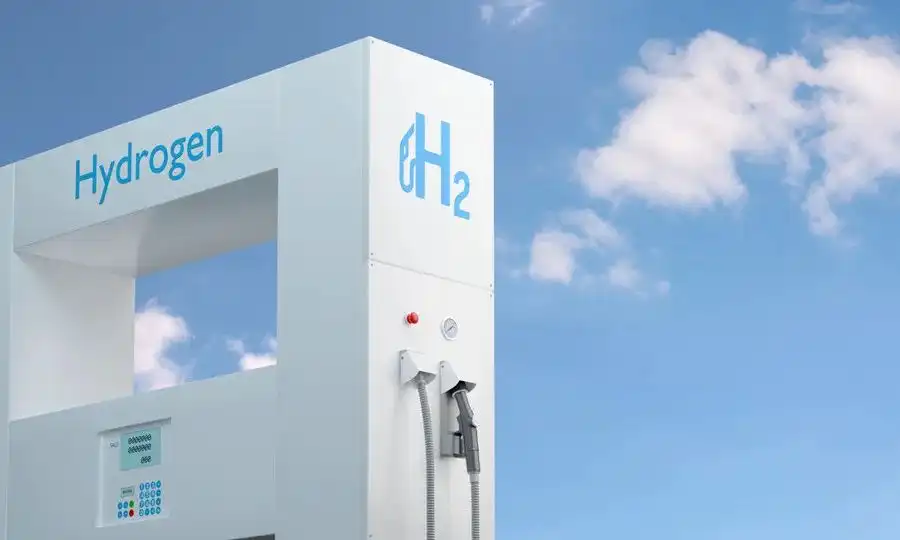Carbon footprint evaluation of alkaline water electrolysis hydrogen production system takes the first step
The China Hydrogen Energy Alliance has taken the lead in developing the "Carbon Footprint Evaluation Methods and Requirements for Alkaline Water Electrolysis Hydrogen Production Systems". In the eyes of industry insiders, the carbon footprint evaluation of electrolyzed water hydrogen production systems is the global electrolyzed water hydrogen production systems and hydrogen energy industry. The first step in low-carbon development has filled the international gap.

A reporter from China Energy News recently learned that the China Hydrogen Energy Alliance has taken the lead in developing the "Carbon Footprint Evaluation Methods and Requirements for Alkaline Water Electrolysis Hydrogen Production Systems", which aims to accurately define the carbon footprint of alkaline water electrolysis hydrogen production systems. Accounting boundaries, emission sources, accounting methods and data acquisition methods, which will help measure and compare product carbon footprint levels and promote low-carbon development of the industry.
In the eyes of industry insiders, the evaluation of the carbon footprint of electrolyzed water hydrogen production systems is the first step in the low-carbon development of the global electrolyzed water hydrogen production system and the hydrogen energy industry, filling an international gap.
The model has been initially established
Relevant experts believe that the hydrogen energy carbon footprint evaluation will guide the low-carbon development of the industry. By quantifying the carbon emission levels at each stage of the product life cycle, exploring high-carbon emission links and carbon reduction potential, and guiding the transformation of high-carbon emission production processes to green and clean processes, thereby further promoting the sustainable and green development of the entire hydrogen energy industry and enhancing international competitiveness.
"We took the lead in developing and completing the carbon footprint evaluation of 4 sets of alkaline electrolyzed water hydrogen production systems and 1 set of PEM electrolyzed water hydrogen production system. We also built a carbon footprint accounting model for the electrolyzed water hydrogen production system, formed a calculation table and a carbon footprint evaluation report, and reviewed A total of 5000+ activity data from 1300+ groups were reviewed. The activity data coverage is wide, ranging from 20 tons to 10 grams." Xiao Chenjiang, assistant general manager of the China Hydrogen Energy Alliance Research Institute, said,"We have launched the first batch of carbon footprint evaluation of electrolyzed water hydrogen production systems. The evaluation results show that there are obvious differences between brands. The same hydrogen production capabilities and the carbon footprints of different brands are significantly different, and there is still room for improvement in the technology maturity in the industry. Electrolytic cells are the components with the largest carbon footprint, and raw material consumption is the largest source of carbon footprint."
Industry insiders believe that the hydrogen energy carbon footprint evaluation results reveal the carbon emissions of each link in the system, help identify and analyze key factors of high-carbon emissions, thereby promoting the improvement of related technologies and the optimization and upgrading of industrial structures. Especially in the international market, carbon footprint has become an important indicator to measure product environmental performance. Through evaluation, it can help companies understand the performance of their products in terms of carbon emissions, so as to take measures to reduce their carbon footprint and improve the competitiveness of their products in the international market.
Xiao Chenjiang said that carrying out carbon footprint evaluation of electrolyzed water hydrogen production systems is the first step in the low-carbon development of electrolyzed water hydrogen production systems and hydrogen energy industry. In the future, evaluation work needs to be continued by improving the evaluation system and standards to form a standardized evaluation process and management system.
Xiang Liu, an engineer at the Energy and Climate Change Research Center of the Sichuan Province Environmental Policy Research and Planning Institute, pointed out in an interview with a reporter from China Energy News that the power carbon footprint emission factor and the average power grid emission factor are the keys to the carbon footprint and carbon emissions of the hydrogen system respectively. It is necessary to continue to build a power carbon footprint model according to local conditions to enhance the accuracy of emission factors, and at the same time release average emission factors for power grids in provinces to meet the carbon footprint and carbon emission accounting and evaluation needs under diversified needs.
Explore and establish a carbon footprint factor database
The electrolyzed water hydrogen production system products will be disassembled in detail, and the more than 600 components required by the product will be strictly verified from six dimensions: quality, material, packaging, transportation method, transportation path, energy consumption and waste. For an alkaline water electrolysis hydrogen production system, the electrolytic cell is the component with the largest carbon footprint.
It is understood that in alkaline water electrolysis hydrogen production systems, polar plates and insulating sheets are the largest sources of carbon footprint. There are certain differences in the carbon footprint data of different alkaline water electrolysis hydrogen production systems. In addition to differences in results caused by differences in quality, one is the difference in raw materials and energy consumption for plate processing; the other is the difference in consumption and material of insulating sheets; the third is the difference in precious metal consumption. Therefore, if companies want to reduce their product carbon footprints in the future, these three points will become the main focus.
Li Hui, chairman of Hydrogen Hui Energy, told a reporter from China Energy News that carrying out carbon footprint evaluation of hydrogen energy equipment products will not only enable electrolysis cell manufacturers to understand greenhouse gas emissions throughout the life cycle of the product, but also help hydrogen production companies understand the carbon footprint of equipment. The proportion of hydrogen carbon footprint can also help companies understand carbon emissions in the supply chain, so as to help companies reduce potential environmental risks.
"Conducting carbon footprint evaluation requires companies to invest in data collection, system monitoring and assessment tool development, which may increase the company's operating costs." Li Hui said that the carbon footprint evaluation of PEM electrolyzed water hydrogen production systems involves multiple links and many technical parameters, which requires companies to have corresponding technical capabilities and professional knowledge, which is a challenge for some small hydrogen energy companies. Currently, we are actively establishing carbon footprint labels with upstream and downstream companies and establishing carbon footprint evaluations for PEM electrolysis cells."
"In the future, we will further verify and calculate the carbon footprints of more electrolytic cells with different specifications and parameters, accumulate more experience, and gradually establish a carbon footprint factor library for electrolytic cells." Xiao Chenjiang said.
Improve the evaluation system and standards
When talking about the construction of hydrogen energy carbon footprint evaluation system, the general view that the reporter heard during the interview is:In the future, relevant departments need to conduct in-depth research on carbon footprint accounting standards and methods for electrolyzed water hydrogen production systems, explore the establishment of more detailed and richer standards, establish more dimensional evaluation systems, and improve the white list entry threshold.
In addition, relevant departments should expand the scope of carbon footprint evaluation of the hydrogen energy industry and further refine and refine the carbon emission data at each stage of hydrogen production, storage, transportation and use. "In the future, we will build a full life cycle carbon footprint management system for electrolyzed water hydrogen production systems." Xiao Chenjiang believes that evaluating the carbon footprint of electrolytic hydrogen production systems is a complex process that requires continuous improvement and optimization in many aspects. In addition, it is necessary to continue to build and improve the carbon emission database for all aspects of the electrolytic hydrogen production system, including raw materials, production processes, transportation and disposal, to ensure the accuracy and timeliness of the data.
Industry insiders suggest that in the future, we should conduct in-depth analysis of the diversified scenarios of the carbon footprint of hydrogen energy industry-related products, and consider scenario analysis in different regions and different technology paths, because factors such as energy structure, technological level, and climatic conditions in different regions will affect hydrogen energy. Carbon footprint. In addition, corresponding policy incentive mechanisms, such as tax incentives, subsidy support, etc., can be formulated to encourage hydrogen energy companies to develop and apply technologies and processes that reduce the carbon footprint of hydrogen energy.
In addition to the product carbon footprint, some experts also suggest that greenhouse gas emission accounting standards and evaluation standards for hydrogen energy products be formulated as soon as possible. Xiang Liu said:"At present, carbon footprint accounting involves issues such as imperfect background databases, high data acquisition requirements, and high professional accounting costs. Priority can be given to promoting some carbon footprint accounting from 'cradle to door', and simultaneously promoting relatively low thresholds. Accounting and reporting on greenhouse gas emissions of hydrogen energy production enterprises, improving standards and specifications such as hydrogen energy carbon footprint classification and low-carbon evaluation of hydrogen energy products, and better enhancing low-carbon competitiveness such as green hydrogen."

